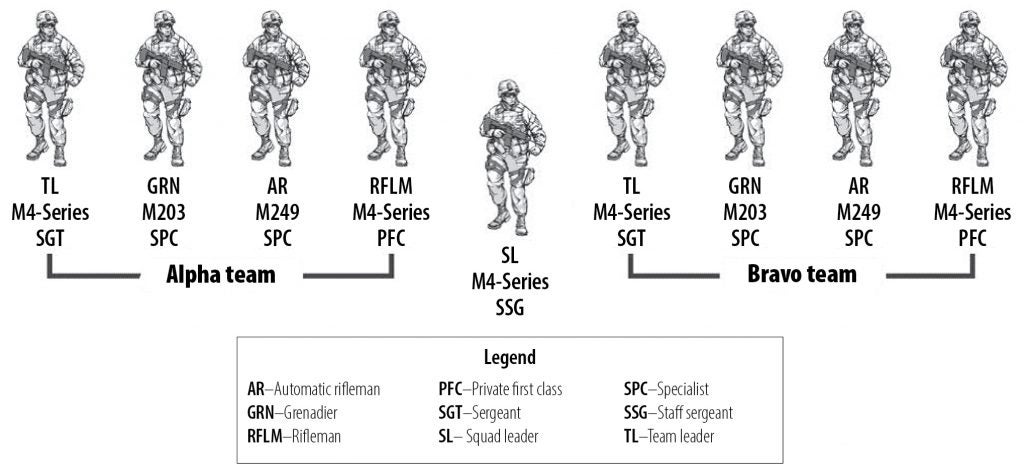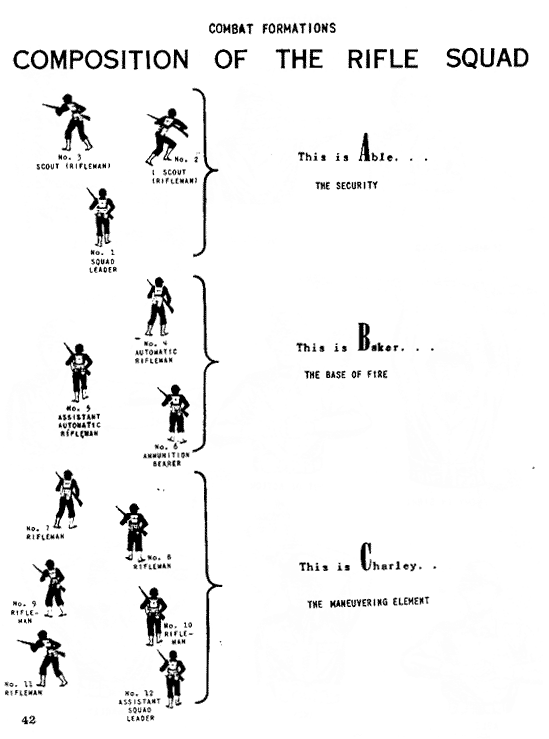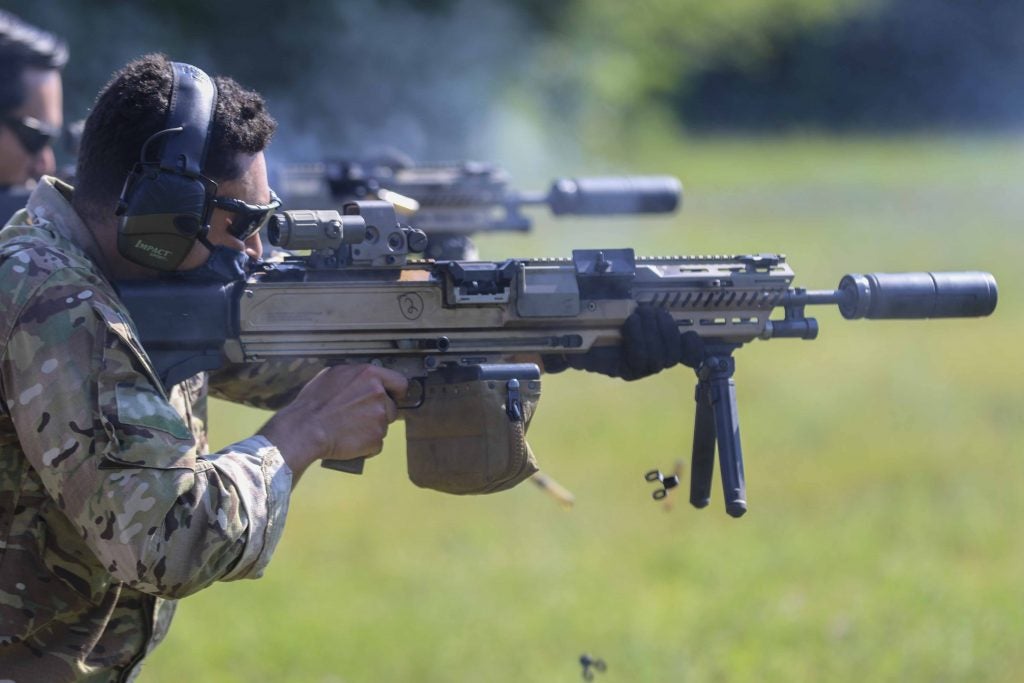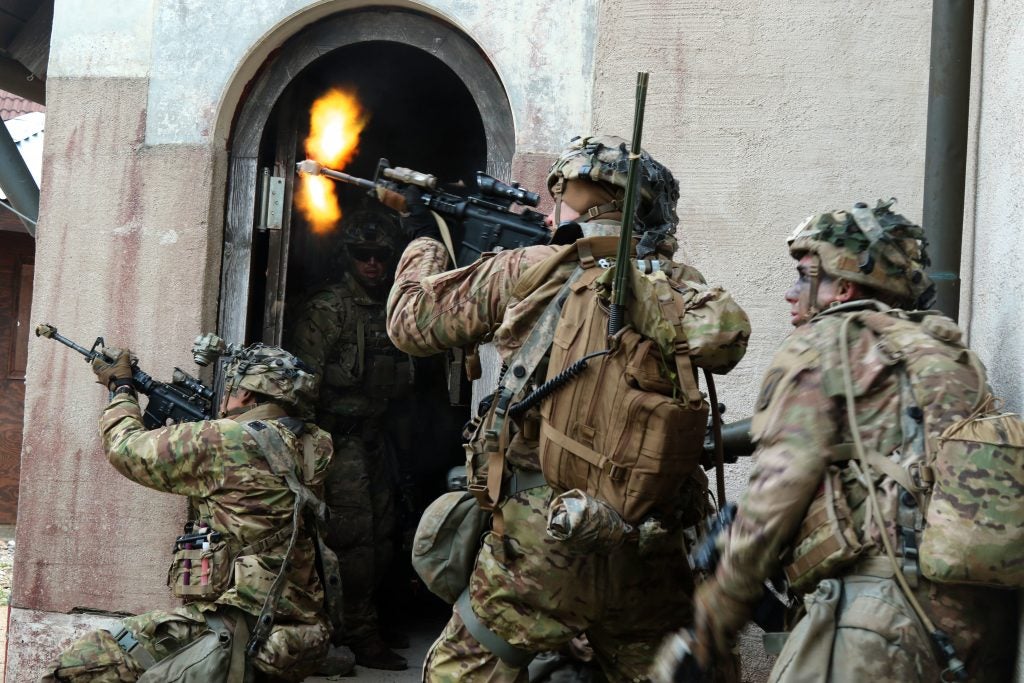US Army Considering Squad Size Change
With the Next Generation Squad Weapon (NGSW) program underway, the US army is considering changes in squad size. Working with the basic assumption that introducing new weapons might mean a change in optimal squad organization, the Army’s Maneuver Battle Lab recently revealed that they have commenced a study tackling the issue. While it is uncertain if any change will result from the study, the army had already indicated that the size of the squad will not fall below 9 men.

The idea of the general rifle squad as a tactical unit was forged by the American Expeditionary Force’s experience during World War I. At the time, the platoon remained the smallest tactical maneuver unit, with squads being specialized around roles like “riflemen”, “automatic riflemen”, and “bombers” which would serve as building blocks for unofficial half-platoon maneuver units. During the interwar period, the idea of a general rifle squad including all these specialties was finally adopted. Between then and now, official army squad sizes varied between the 8 men of 1920 and the 12 of 1942, with the latest official tables assuming a squad of 9 organized into two fire-teams.

Over the past hundred years the debate around the optimal size of the squad and its basic role has continued. Larger squads can absorb more casualties, carry more weapons and ammunition and have greater firepower. On the other hand, smaller squads are easier to control, are more maneuverable and less taxing on total manpower. Squads may be organized into two or three fire-teams which allow for complex maneuvers. Others however, have supported the concept of a squad as a single maneuver unit which only maneuvers in cooperation with other squads as part of the platoon.

A US Army study conducted in the 1990s concluded that the Army’s current 9-man organization was too small for the fire-team structure it adopted and that the army should either repurpose the squad to act as a single large fire-team within a platoon or raise its strength to 11 men. These recommendations, however, were not acted on at the time. Currently, the US Marine Corps are experimenting with 15-man squads but whether the US Army’s current study will lead to any change in squad organization remains uncertain. If the NGSW program is successful in selecting two new infantry weapons it will be fascinating to see how the new weapons’ weight, capabilities and ammunition requirements shape the future US Army infantry squad.

